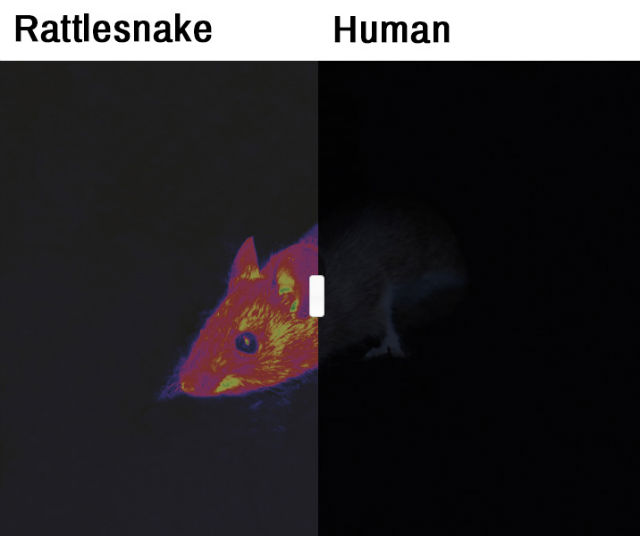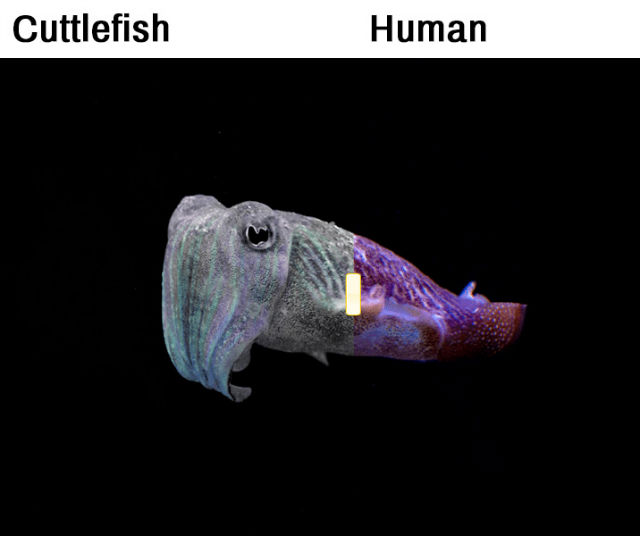It Might Come As A Big Surprise, But Animals See The World Quite Differently Than We Do!

Different animals see the world differently; dogs and cats, for example, are partially colour-blind. This means that they may not see things in the exact same way that we see them. Human eyes are trichromatic – possessing three types of photoreceptors – and these are sensitive to red, green, and blue colours. However, not all animals have trichromatic eyes: some only have two kinds of photoreceptors, while others have four. A cat may, then, see the world differently than we do. Most of the differences between the ways in which different animals see the world mainly have to do with colour and visibility.
The following pictures will give you a clear definition of how distinct human eyesight is from those of other creatures. It is pretty mind-blowing!
Cat: Cats are mysterious, admit it (also slightly scary at times; I don’t know how they manage that: being cute and scary at the same time). Unlike humans, cats’ eyes are dichromatic: they only have two kinds of photoreceptors in their eyes, with eyesight similar to that of people with red-green colour blindness. This means that anything that’s either red or green is seen in a completely different colour altogether. Moreover, the lower resolution of cats’ eyesight means that their vision is blurrier than that of humans’.
Bee: Bees are, like humans, trichromatic, with receptors sensitive to yellow, blue, and UV light. How cool is that!? The sensitivity to UV light allows bees to detect patterns on flower petals which lead them to the nectar. Researchers believe that their sensitivity to UV light is so high that they can possibly see ‘more than one colour of ultraviolet.’ Bees’ eyes, too, have a much lower resolution as compared to human eyes, and their vision is, therefore, extremely blurred.
Birds: Birds have tetrachromatic eyes: the four types of receptors are sensitive to red, green, blue, and ultraviolet. Birds – usually large birds of prey – have a high-resolution vision: an eagle, for example, has a vision 2.5 times higher in resolution than a human’s.
Rattlesnake: Rattlesnakes have a low-resolution colour vision in the day; it’s in the night-time that their eyesight picks up. Similar to several other snakes, rattlesnakes have sensory tools, called pit organs, on either side of their snout, between the eye and the nostril. Each of these pit organs has a membrane within them that can detect heat, which then gets converted to nerve signals. They can then detect the heat of a nearby prey. The rattlesnake’s brain, therefore, superimposes the thermal image from the pit organs over the visual image from the eyes, forming the kind of image that we would see through an infrared camera.
Cuttlefish: Cuttlefish have blurrier vision than humans and are also completely colour-blind; they can also only see in shades of grey (50 shades, perhaps?). Photoreceptors in their eyes can also detect polarisation – something that human eyes are incapable of doing. This polarised image is superimposed over the grey processed image in order to form the final picture that a cuttlefish sees.
Images courtesy: Dr Schmitt
If Dinosaurs had never gone extinct, they might have evolved into “Dinosauroids”.
The Great Potoo Bird Will Probably Scare The Living Bejesus Out Of You!




























